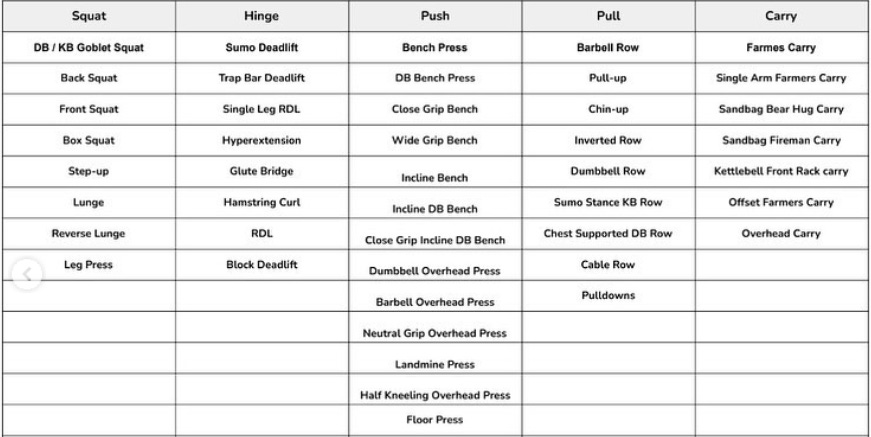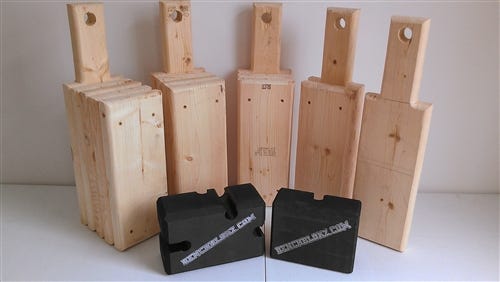Most of my clients aren’t freak athletes. Consequently, programming for clients requires frequent modifications. Mobility, injury history, and pain often get in the way of selecting an “optimal” exercise. For this reason, I try not to judge trainers immediately when they post their client videos. You never really know what kind of limitations that individual is working through. Psychological limitations are also very real. Clients that injured their back deadlifting in the past can be hesitant to pick up a barbell again.
In this article I wanted to show you my movement matrix for clients and how I select movements to plug and play into training. I start with the five foundational movement patterns: Squat, Hinge, Push, Pull, Carry. From there I like to select 2 to 4 movements from each category for novices to begin with.
It’s important to select an alternate movement that closely resembles the one you’re replacing.
Does it have a similar range of motion?
Does it work the same muscle group(s)?
Is it appropriate for this section of the session? (deadlifting at the end of a workout isn’t a great idea)
Does it aim to achieve a similar outcome?
Is it a compound or isolation movement?
Is it done in the same plane of motion?
Working Around Pain or Injury
It can be tricky sometimes to select a movement that can be performed pain free. Shoot for a movement that can be performed at a full range of motion and still stimulate the tissue without causing any further pain or damage. If most movements cause pain, then, and only then, should you decrease range of motion. Range of motion can also be progressed each block.
Range of motion progressions
3’ Board Bench Press
1’ Board Bench Press
Bench Press from chest
Changing leverages or performing a similar movement until you can perform the targeted movement pain free is also an option. By modifying the mechanics of the movement you can still work similar muscle groups while putting less strain into the affected tissue(s).
Mechanical Progressions
Close Grip Floor Press
Close Grip Bench Press
Bench Press
It’s important to work through full ranges of motion to restore tissue function and eliminate pain for good. It can take days, weeks, or months depending on severity and weakness of the affected tissue(s). Use alternate movements to work around injuries or immobility, simply resting or hoping mobility will spontaneously improve is not an option. Everyone nowadays runs to chiropractors, ice baths, and massages for recovery when they’re often just under trained and weak. Strengthen you soft tissues and muscle, work through full ranges of motion, and vary your exercise selection to stay injury free and make progress ad infinitum.
If you’re new it’s totally fine to only do the same couple of exercise per muscle group until you build a solid foundation. Most training plans shouldn’t have 10+ exercises per day to perform. Train smart and train hard.






Great read. Enjoyed the intro about most of your clients not being freakbeasts. Old ladies I train get the same intensity as young men, just in a different form.